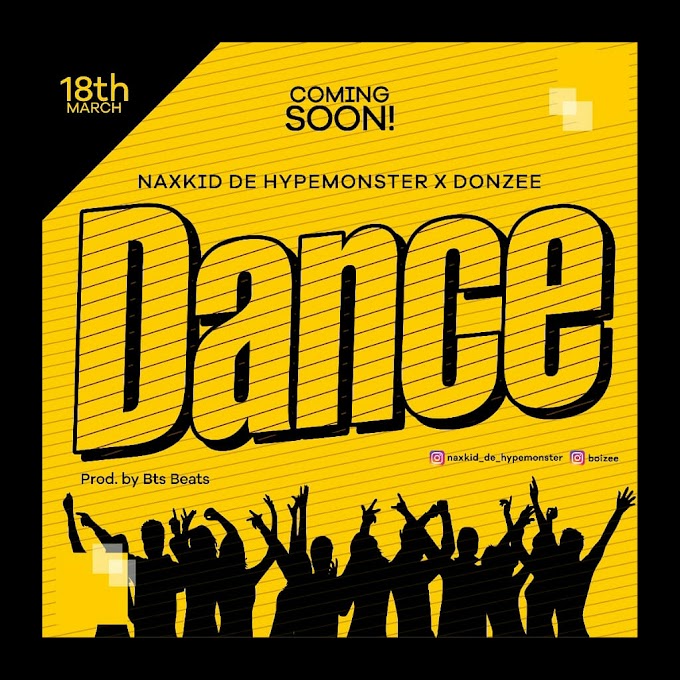I wrote a special song just for you: Happy birthday to you Happy birthday to you Happy birthday, dear reader of the TopRank blog, Happy birthday to you Are you emotionally moved or impressed by my effort? Probably not. Even if I used a little tech wizardry to insert your name in there, you likely wouldn’t be blown away by the level of customization. It’s just filling in a template, not creating something new. In theory, account-based marketing (ABM) should mean delivering hyper-relevant, custom content to your most relevant accounts. In practice, however, it tends to mean coming up with ever-more intricate Mad Libs. We end up templatizing everything to scale up our efforts, losing the immediacy and relevance that makes ABM work. Fortunately, a few practitioners out there are demonstrating how to take ABM at scale beyond the “fill-in-the-blank” model. Gary Gerber shared his tips in our first Break Free video of the new season. This time around, we’re talking to Danny Nail about the amazing work he’s doing at SAP.* Danny is the Global Head of Account Based Marketing at SAP. Under his leadership, they’ve developed a remarkable platform for repurposing and customizing content for different regions, accounts, and even across verticals. The system Danny and his team built is largely self-serve, and it’s cheaper and more efficient than having local offices create their own assets. The best part? You don’t need Fortune 500-level resources to create something similar for your team. I sat down with Danny during B2BMX to talk about ABM, content marketing, and the importance of creativity in everything from content to strategy. Watch the video or listen to the audio below, and skip past the embeds for a few key highlights. [bctt tweet="“You have to let go of templatized old ideas...and start really digging into how you can change what you're doing and make it more efficient, more effective, and be creative about that.” @Danny Nail
Break Free B2B Interview with Danny Nail: Timeline and Highlights: 1:58 - A new definition for scalable ABM 2:27 - Creating a self-serve ABM platform 3:30 - Aligning sales and marketing for ABM 5:00 - Solving the attribution dispute between sales and marketing 6:00 - Building measurement into an ABM platform 7:15 - Refining the definition of ABM 10:45 - Building a better ABM platform 14:00 - The power of non-promotional content 15:30 - Why Danny got into marketing 17:00 - How marketing will change in the next 5 years 18:40 - Rising above the personalized/scalable trade-off 22:35 - How can marketers break free? Danny: I've developed what I call the ABM asset delivery platform. I worked with my agency to develop that. What it is, is a library of the assets we've already created for our ABM program at a global level. So think about if you have, let's say, five accounts in oil and gas globally, and they're across there in four different regions, but the things that you create for them are synergistic across all five accounts. So they can be used for those five accounts, they most likely are going to be usable for any other oil and gas account in the world. So what we do is there on the platform, a seller or marketer can go onto the platform and actually order that asset to be versioned for that account. If they do it at what we call level three, it takes three to five weeks, costs 1500 euro, and they've got this great asset that looks like it was developed specifically for their account. Josh: So this is a platform that's almost a self-serve for sales and marketing? Danny: Think “Amazon” for ABM assets. Josh: Were there any challenges that you faced trying to get ABM aligned with both sales and marketing? Danny: I think that the biggest challenge is the relationship with sales. Because historically, marketing and sales have kind of been at odds a bit, which is unfortunate, but ABM brings the two together. So throughout the development of each of my programs, I work closely with the sales leads of each of the accounts within the program. They're involved in the creation of the assets. They're involved in the messaging that happens within the assets for their account. So they have the opportunity to, at the end of the day, tailor their assets, the things that I developed for them even more so for their specific accounts. So they know it resonates with their account. The key to that is understanding the sales cycle. And understanding how sellers think and what they're up against. So we know that every year there at certain times of the year they're going to be involved in Sapphire or field kickoff meetings or end of quarter close, so we've got to watch out and and be cognizant of the things that the salespeople are facing, so that when we go to them and ask for their time, we're going at a time when we know they would have time. Danny: When I was asked to start the industry IBM program at SAP, there were three objectives: Have global marketing, get closer to sales and create something that can be scalable. Typically, when people think of scalability, they think of templates. So the whole bill of material is templatized. White Paper, tweets, let's have three tweets, two blogs, sets of blog copy, an email, and the white paper and maybe an infographic that comes from the white paper, right? Every program, same bill of materials. With the platform and the way we build the assets, we don't even think about what we're going to build until we know the story we're going to tell. And once we know the story we're going to tell, depending on what type of story it is, that's when we decide what type of asset or material we're going to build. And then that goes on to the platform. It starts as generic, but then you can have it versioned at a number of different levels. Danny: The things that some people are calling ABM are really target account marketing. That should be the way we market on a daily basis. We should know what the sentiment about interest and intent data is for our target accounts, we should have a set of target accounts that we're monitoring and serving our material to when they're ready for it and when they're basically asking for it because they're showing intent on it. That should be the marketing across the board. But then that should also lead to accounts where we can do account based marketing. So the continuum should be from target account marketing, to ABM, to one-to-one ABM, all the way across that scale, but it should start with target account marketing. So we want to be done with customized or targeted lists. If you're going to send something to somebody, at least make it as close to industry specific as you can, so that it's talking in their language, and it's talking about their problems. Because HR issues, everyone would think they're the same. But retail has totally different HR issues than oil and gas because of seasonality. And you've got seasonal workers around Christmas and holidays and things like that. So you need to be able to understand that and show your customers that you understand that because that's how they're thinking. Josh: I think we have this feeling that we have limited resources. So we have to find as much of a synergy as we can between messaging and it seems like with the technology that you're working with, you don't have to make that trade off anymore. Danny: That's right. I think that's one of the things — I think marketers have typically — when they thought scalability, again, they thought templatized. And instead of thinking templatized, think of different ways to scale, or the way you create the material that you create to make it more scalable, as opposed to making it templatized. Use the creative you've done for one thing and repurpose it for another thing. So we've done that with one of our assets, it’s an automotive asset. That's where a car is driving through a village, and it's a linear story. So the next time we had a linear story, we changed it from a car driving through a village to a person walking through a store, same asset, just repurposed so that we could get the scale of at least the programming that we had done on the back end of the asset to make the the retail asset. Danny: You have to let go of templatized, old ideas. You have to break free of thinking about things the way we've always thought about them, and start really digging into how you can change what you're doing and make it more efficient, more effective, but be creative about that. Because the platform didn't exist, but now it does. And that's because we got creative about how we could scale ABM, as opposed to adding people to scale or adding money to scale.
Break Free B2B Marketing: Danny Nail on Building an ABM at Scale Platform - YouTube
Did you find this content helpful?





![[Mp3]Ferry G-We Pray](https://blogger.googleusercontent.com/img/b/R29vZ2xl/AVvXsEhIrchIsb07O3bNNMrpA9xBSLX5KIkFyE9JBUvrnxGIE3UKnhk6Z9LFpRkcoSBtxZBBe5GxzZQWRVkdXpTQxLABtBuBfdI87PDTwrfJwTuVL5rNW9mqBefOthD-z6AB3t_4476KjgMreME6/w680/1587327150810671-0.png)


![[Mp3]Shonlex X OG Banty-Fine girl](https://blogger.googleusercontent.com/img/b/R29vZ2xl/AVvXsEhnEEpsiaZmeRi5qPZH-p6_pbbxCav67e6Xpp1u91tu8Y70OcvthBEfniZvSP8KcrcL0h06bmr5aAQ-9ynv1MgkR5gcPTwTQrq1b2aAQ85zEI-f3bGIyb-u3pIs7Oxab_hsJyUlWpUfIn_K/w680/1591539400624192-0.png)
![[Music] Soestmilliolaz-Hustle](https://blogger.googleusercontent.com/img/b/R29vZ2xl/AVvXsEghKd8cWodCguQ79VBpazI0pDRT_6RFTb-5ArOdrrovblzmSkytQ8Oy3dz5ByNAAG6eVd7cHu3yjFSo9EMOAz3Wk0LuzNmwfp4wSyPb5BYNxEurMPJUiBGWw6MQHSaHzuICZubIQJPM0lxC/w680/1591476882999766-0.png)
![[Music]Sharp cee-Be My Wife](https://blogger.googleusercontent.com/img/b/R29vZ2xl/AVvXsEiS75uAQDAp2YkryE3gG1oPHWIrZ_1N9l4y92fR85ofjYQqiCJ5kRx9TlyqqoraF1WAyvaoxPVm_-cmk0xe37sNMR1emP0fQiymiyLiDPTS_GIWNomLO8_qU1e67fw5EaGlBNo3jhux3Q6P/w680/IMG-20200430-WA0001.jpg)

![[Mp3] Femkizzy-Believe](https://blogger.googleusercontent.com/img/b/R29vZ2xl/AVvXsEjvJYiPU2TAckbQzOuASRZBKOQlMMORipdH5lF5_7KVd5_j5tXi6SuBcqNTOeqvPBnCuOJ2eyEdPotOrecNMz_N_XlqLjDwLKN9VBqFV8VKcsPT-1pfKGYi7DWXl0BmH6mVN8pxMH7a0Rea/w680/IMG-20191219-WA0010.jpg)